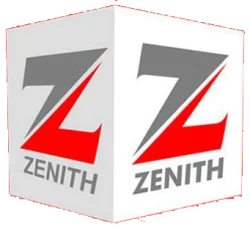1.1 Introduction
A shop is a place where various types of goods are packed and sold. Shopping is the process of purchasing items in exchange for money. Shopping intranet simply means using a private computer network, which uses the internet protocol in managing a shopping centre in a campus environment. It will be used by the students, staffs and management of the school including the school book shop. The place where it will be used is within the campus environment, through the software to be developed called a Computerized Campus Shopping Intranet where you can select and purchase what you want at any time of the day.
As a prelude to other parts of this study, this chapter will discuss the background upon which this study was initiated, the statement of problems that led to this study, the Aim and Objectives of the study. Others are Significance of the study, Scope of work, Limitations of the Study and Definition of technical terms.
1.2 Background of Study
An E-commerce is the trading of products or services using computer networks, such as the Internet (Wikipedia, 2015). Electronic commerce draws on technologies such as mobile commerce, electronic funds transfer, supply chain management, Internet marketing, online transaction processing, electronic data interchange (EDI), inventory management systems, and automated data collection systems. Modern electronic commerce typically uses the World Wide Web for at least one part of the transaction’s life cycle, although it may also use other technologies such as e-mail. Every business that want to shoot online, irrespective of it’s types need an e-commerce software product that fits your online store’s unique needs and requirements. For the past years e-commerce has been the trend for most business spanning across different cities and countries. Where product and service can be deliver through their web service and delivery is done using different transport medium like ship,car or through post office.
This work is an attempt at delivering an online shopping cart system capable of delivering goods and services on demand, using a small Mobile outlet as a case study.
1.3 Statement of Problem
This research work was undertaken to solve the various challenges encounter in showcasing and delivering goods and services to different client around the globe where every business transaction involves an on presence for transaction to be successfully executed.
1.4 Aim and Objectives of the Study
The aim of the study is to design and implement a Computerized Campus Shopping Intranet using FPNO as a case study. In achieving this aim, the following specific objectives were laid out as follows to develop an application software that will:
- Display goods and services in the store.
- Automate every sale effectively without mixing product prizes.
- Store product detail using a secure database.
1.5 Significance of Study
This software will help to make shopping stress-free and fun in the sense that you will place an order and it will be delivered at your desired location without stress. This software automates the existing system and provides more security. It will reduce pressure mounted on sellers from the buyers, and ensure transaction convenience. The contribution of this project work to the growth of ICT which fully means information and communication technology in Nigeria is to promote the use of shopping intranet for different campus as an educational tool.
This study will also be of immense benefit to small and medium scale enterprises and other researchers who intend to know more on this study and can also be used by non-researchers to build more on their research work. This study contributes to knowledge and could serve as a guide for other study.
1.6 Scope of Study
The scope of the research is focused on the Design and Implementation of a Computerized Campus Shopping Intranet using Federal Polytechnic Nekede, Owerri (FPNO) in Imo State as a case study.
1.7 Limitations of the Study
During the course of this study, many things militated against its completion, some of which are:
- Time Constraint: The time frame given to accomplish this project was very short due to school academic calendar and it was carried out under pressure which made the researcher not to implement some necessary features.
- Research material: availability of research material is a major setback to the scope of the study.
- Frequent power failure: This made the researcher append more money on fuel to ensure sustainable power.
- Financial Constraint: Insufficient fund tends to impede the efficiency of the researcher in sourcing for the relevant materials, literature or information and in the process of data collection (internet).
1.8 Definition of Terms
Application Service Provider (ASP): Is defined as an enterprise that delivers application functionality and associated services across a network to multiple customers using a rental or usage-based transaction-pricing model.
E-commerce: Electronic commerce, commonly written as e-commerce, is the trading in products or services using computer networks, such as the Internet.
Electronic data interchange (EDI): Electronic data interchange (EDI) is an electronic communication method that provides standards for exchanging data via any electronic means.




